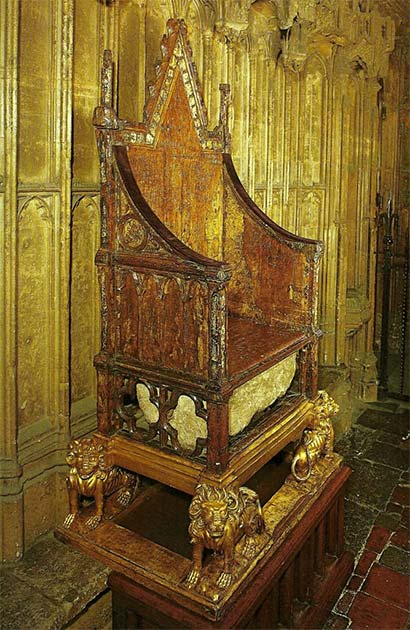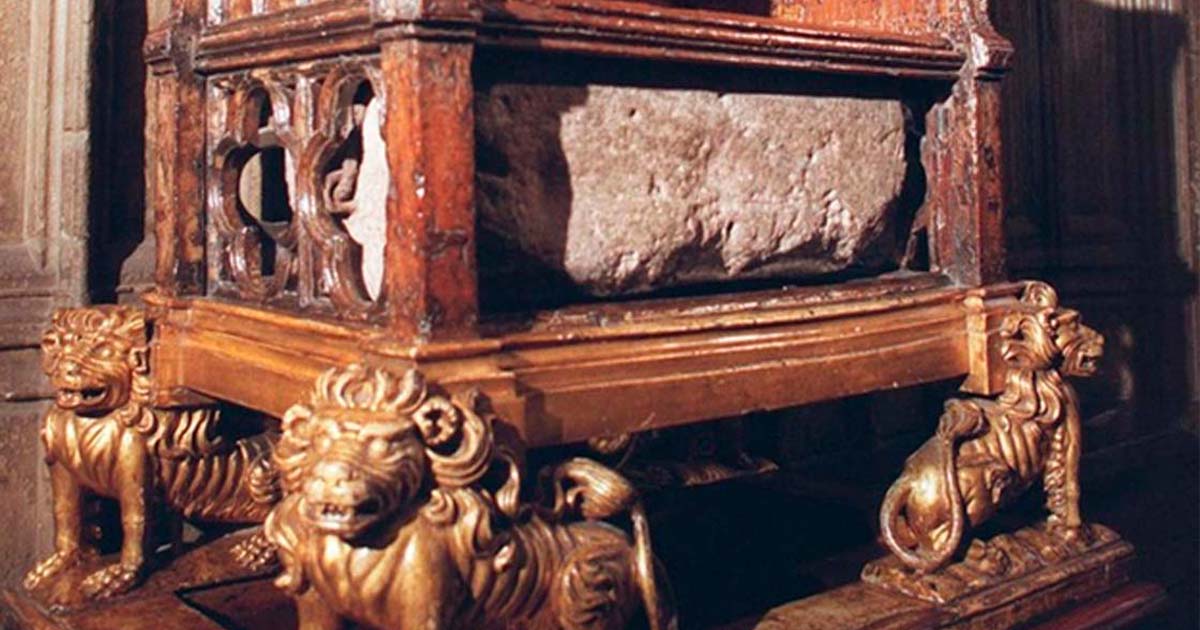Charles III Will Be Crowned on the Stone of Scone. But Is It the Real Stone?
Scotland’s legendary “Stone of Destiny” or “Stone of Scone” was used to coronate the ancient kings and queens of Scotland for almost 400 years, before being taken by the English monarchy in 1296. 700 years later, it was returned to Scotland. Now will be taken to England and used in the Coronation of King Charles III. But what are its real origins, and was the real Stone of Destiny switched for a fake?
Supernatural Biblical Stones in Scotland?
A block of sandstone believed to be the ancient “Stone of Destiny” will be transported from Edinburgh Castle in Scotland to Westminster Abbey in London, for the coronation of King Charles III on May 6. Also known as the “Stone of Scone,” this ancient symbol of the Scottish monarchy was used between the 9th and 14th centuries to inaugurate Scots kings and queens.
- The Voice is Mightier than the Sword: The Stone of Scone That Roared with Power
- Roman Numerals Discovered on Stone of Destiny Ahead of King Charles Coronation
Scottish and Irish mythology claims the stone originally came to Ireland during biblical times. It is said to have been the same stone that appeared in the Book of Genesis 28:12-17, where it was known as the “Stone of Jacob,” that was transported from Bethel to Haran in the Middle East. Known as the “Stone of Bethel” in Jewish and Christian traditions, this stone was used as a pillow by Jacob, upon which he dreamed of a ladder reaching to heaven. The biblical stone became a pillar in Jacob’s dream, and he later identified it as the "House of God," after which the stone was associated with supernatural powers.
The Stone That Roared
Irish and Scottish mythology claims that Jacob’s stone was transported to Egypt and then Spain, and that it ended up at the Hill of Tara in Ireland where it was called the “Lia Fail” (the stone that roared). It was given this name because the stone was said to have roared the name of the rightful king of Ireland, similarly to the Sword in the Stone of Arthurian legend, which only allowed the rightful king of England to draw the sword from the stone.
After centuries of crowning ancient High Kings in Ireland, the stone is said to have been taken to Dál Riata, which was an Irish colony in western Scotland. Stories maintain the sacred king making stone was kept at Dunstaffnage Castle near Oban, and that around 840 AD it was finally moved to Scone in Perthshire where it served the same purpose.
- Who Killed the King? An Ancient Irish Murder Mystery
- St. Edward’s Crown to Be Worn Again at King Charles III’s Coronation
Geology Suggests A Mythological Foundation
According to the Daily Mail, Ian Bradley, a professor of cultural and spiritual history at the University of St Andrews, has negated the above stories of the stone’s journey as mythology. He said it’s “highly doubtful” that the stone used by Scots in Coronation rituals was the same stone as was associated with Jacob in the Holy Land. The historian pointed out that the stone represents a type of sandstone “unknown in the Middle East and Ireland, but relatively common around Scone in Perthshire.”

Replica of the Stone of Scone, Scone Palace, Perth, Scotland. (CC BY-SA 2.0)
In 1296 AD, while the Stone of Scone was being guarded at Scone Abbey near Perth, in Central Scotland, King Edward I of England (Hammer of the Scots) invaded Scotland. History records that Edward stole the stone and took it to Westminster Abbey. However, many Scots believe having two weeks' notice that Edward was invading Scotland, the monks of Scone switched the stone with a toilet block, and Edward actually stole a fake stone.
Bradley added that the story about the original relic being swapped by the Scots before it was stolen by the English in 1296 AD, is “interesting,” but not supported by evidence.

King Edward’s Chair, constructed in 1300 AD, located in the heart of London’s Westminster Abbey, has been used by every English or British monarch since 1626, and will be once again loaded with the Stone of Destiny on May 6th 2023. (Nathan Hughes Hamilton / CC BY 2.0)
The Roaring Stone, On The Move
Now incorporated into the Coronation Chair of Westminster Abbey, the Stone of Destiny has been used in the crowning ceremonies of British monarchs since 1296 AD. However, in 1950, four Scottish students stole the stone from Westminster, but they were soon apprehended and the stone was returned to London. It was officially repatriated to Scotland in an official ceremony in November 1996, and it has since resided on display in Edinburgh Castle.
Professor Bradley writes in the new issue of the Church of Scotland's “Life and Work” magazine that King Edward seized the stone in 1296 AD “as part of his bid to annex the Scottish crown to that of England.” Bradley described the theory that King Edward was fobbed off with a fake as “interesting” but added that the stolen stone was “probably the genuine stone” that had been used for Scottish crownings for at least 400 years.
Top Image: The Stone of Scone. Source: Imelde Corelli Gioielli
By Ashley Cowie




















Comments
I recall reading previously, that the current stone bears no resemblance to the earliest written descriptions of the 'stone of destiny'.
From memory, it was anciently described on more than one occasion, as being circular, with a depression / dimple in the centre (like an old grind stone).